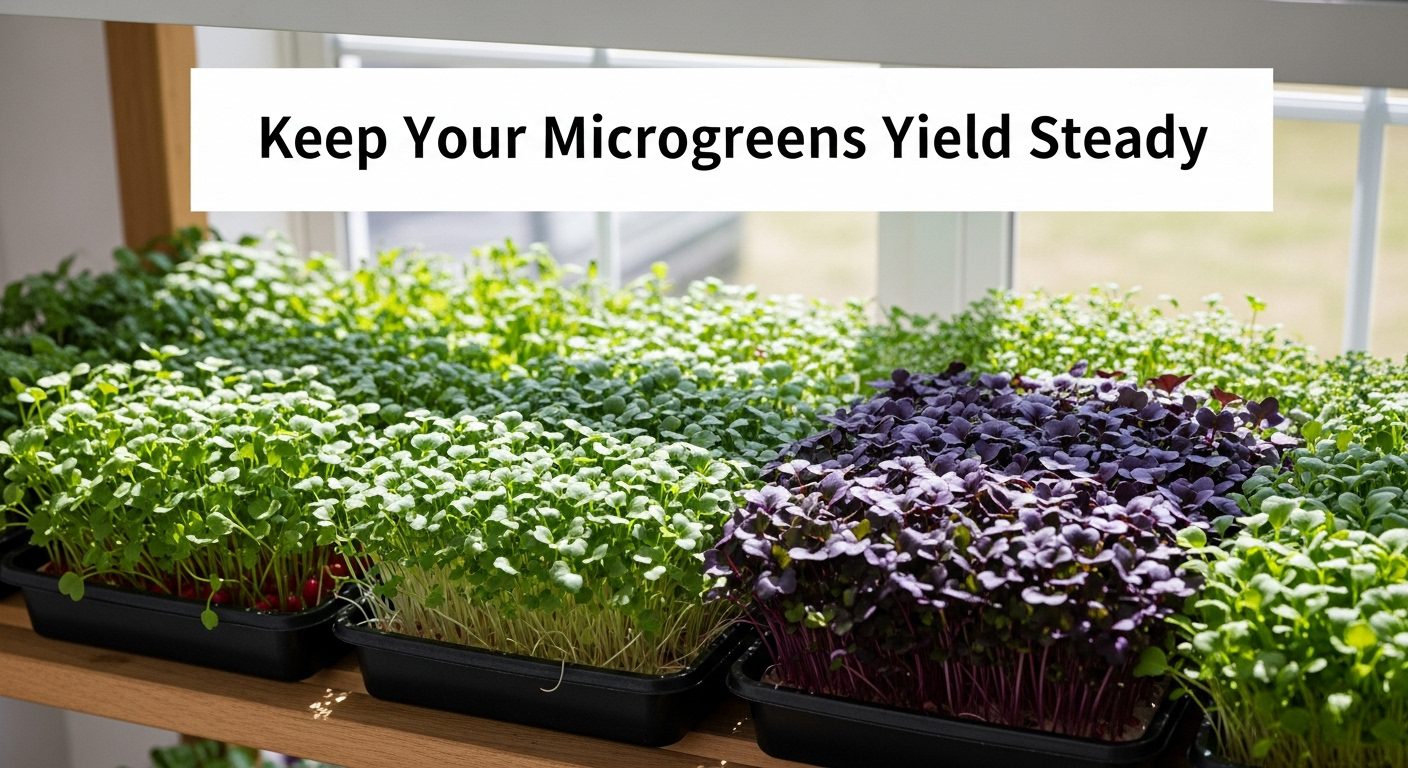
A simple walk in a garden can give you big ideas. You can make your outdoor space very peaceful and quiet, like a Japanese garden. This kind of garden helps you feel calm and happy.
Japanese gardens have many nice things like ponds with koi fish and pretty stone lights. These things make the garden a great place to relax and be alone with nature.
You can make your own garden like this too, with a little help and ideas.

Zen sand gardens, or karesansui, embody the essence of minimalism, offering a tranquil space for reflection and meditation. Composed of carefully raked gravel or sand, these gardens symbolize water and islands, inviting a peaceful ambiance. Incorporating strategically placed rocks, moss, and delicate plants, they encourage harmony and simplicity. Perfect for small spaces, a Zen sand garden promotes mindfulness and serves as a serene retreat, allowing you to connect with nature and find inner calm.

A koi pond is a quintessential element in Japanese gardens, embodying tranquility and natural beauty. The gentle movement of water combined with colorful koi fish creates a serene atmosphere, perfect for reflection and relaxation. Surrounding the pond with smooth stones, lush plants, and ornamental features like lanterns enhances the aesthetic appeal. Incorporating benches or stepping stones encourages visitors to pause and immerse themselves in this peaceful oasis, making the garden a true sanctuary for mind and spirit.
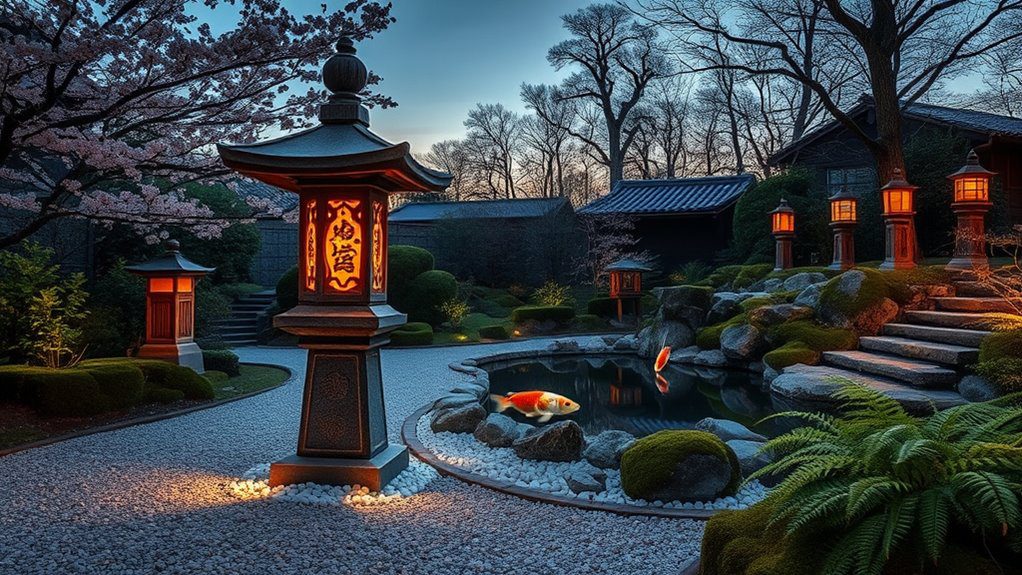
Incorporating stone lanterns into your Japanese garden adds a touch of authenticity and tranquility. These beautifully crafted lanterns, traditionally made from granite or other natural stones, serve as focal points that enhance the serene atmosphere. Strategically placing them along pathways or near water features not only illuminates the garden at night but also creates harmonious balance with surrounding plants. Choose designs that reflect classic Japanese aesthetics to deepen the cultural connection of your garden space.
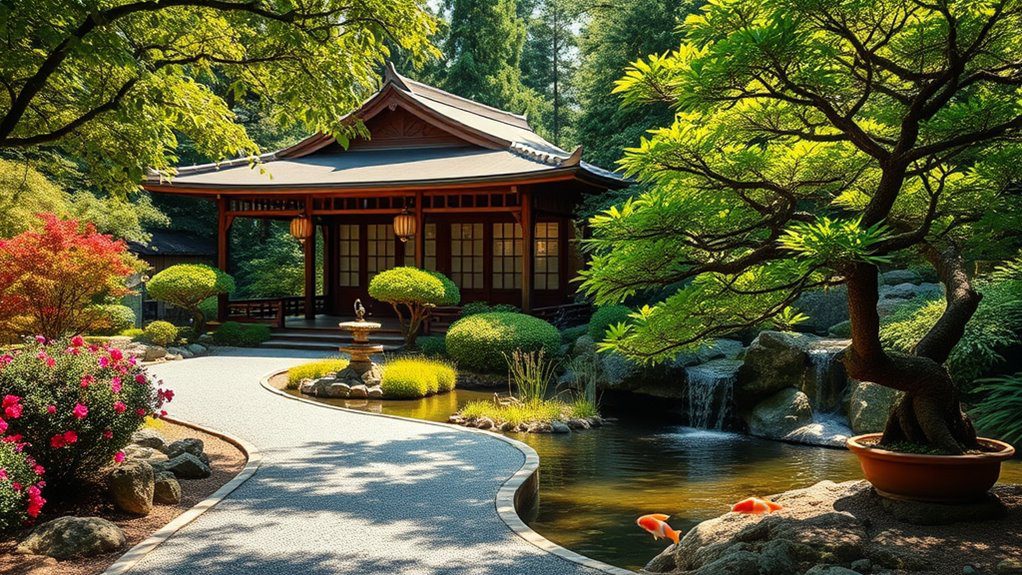
Designing a tranquil tea garden involves creating a serene space that fosters relaxation and contemplation. Start with a gravel or stepping stone pathway leading to a charming tea pavilion, surrounded by lush greenery and carefully pruned shrubs. Incorporate a koi pond and a small waterfall to enhance the soothing sound of flowing water. Select traditional Japanese elements, such as lanterns and bonsai trees, to complete the atmosphere, inviting peaceful tea ceremonies amidst nature’s beauty.
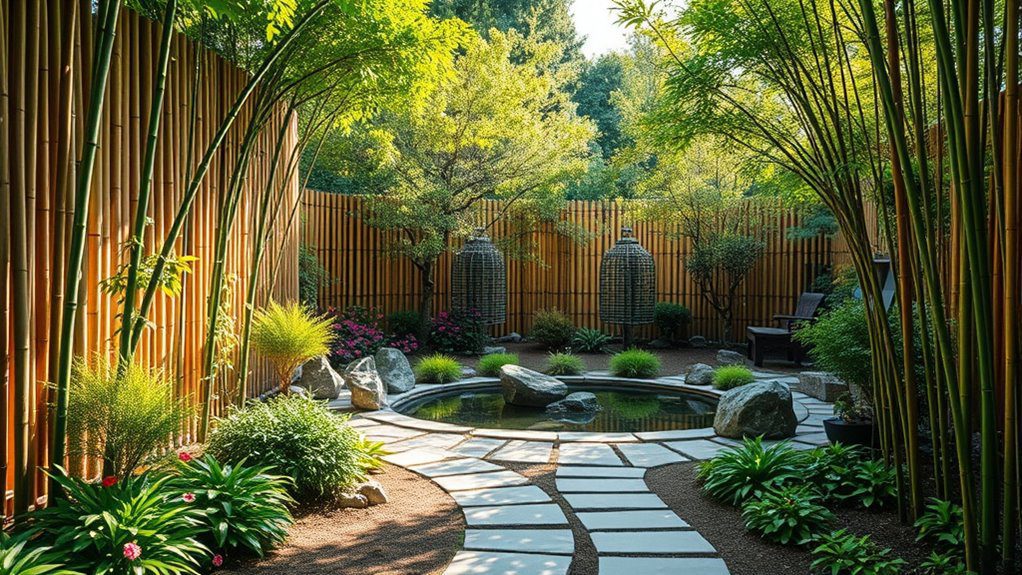
Bamboo fencing is an excellent choice for creating a natural barrier in your Japanese garden. Its aesthetic appeal complements the serene atmosphere while providing functionality. This lightweight, durable material can be used to enclose specific areas, provide privacy, or define pathways. The natural hues of bamboo blend harmoniously with greenery, enhancing the garden’s tranquility. Additionally, bamboo fencing allows for airflow and light, maintaining an open feel while effectively separating spaces within your garden retreat.
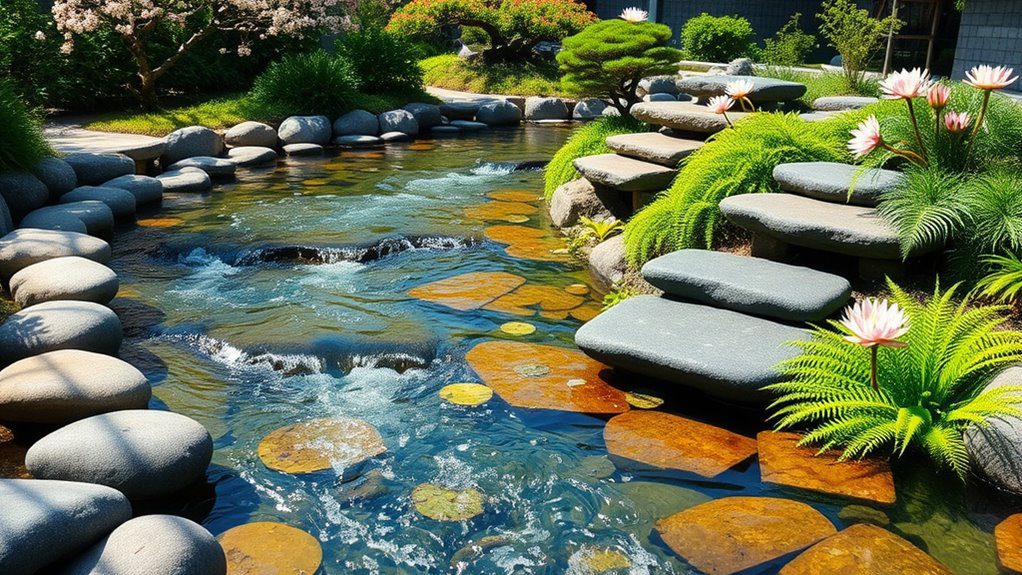
Incorporating a bubbling stream into your Japanese garden can enhance its tranquility and beauty. The gentle sound of flowing water creates a serene atmosphere, perfect for meditation and relaxation. To design your stream, consider a winding path that mimics natural waterways, lined with smooth stones and gravel. Adding aquatic plants, such as water lilies or ferns, can further enhance the landscape, inviting wildlife and creating a harmonious balance between nature and design.
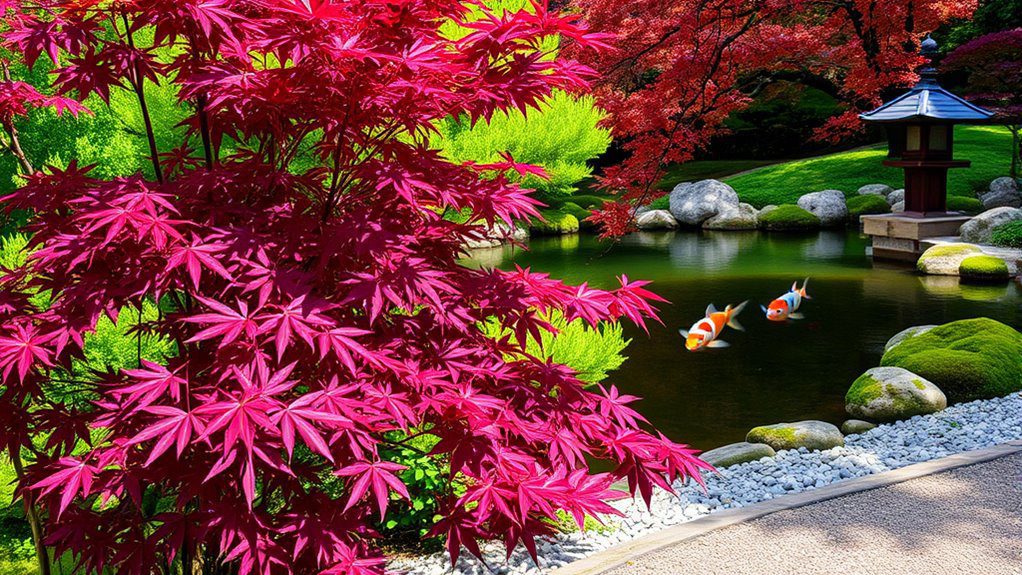
Japanese maples are a stunning addition to any Japanese garden, bringing vibrant color and unique texture to the landscape. With their intricate leaf shapes and a variety of hues—from deep reds and purples to soft greens and yellows—they create a dynamic focal point throughout the seasons. These trees thrive in partial shade and well-drained soil, providing a serene atmosphere as their delicate branches sway gently in the breeze. Incorporating Japanese maples enhances the aesthetic appeal and tranquility of your garden space.
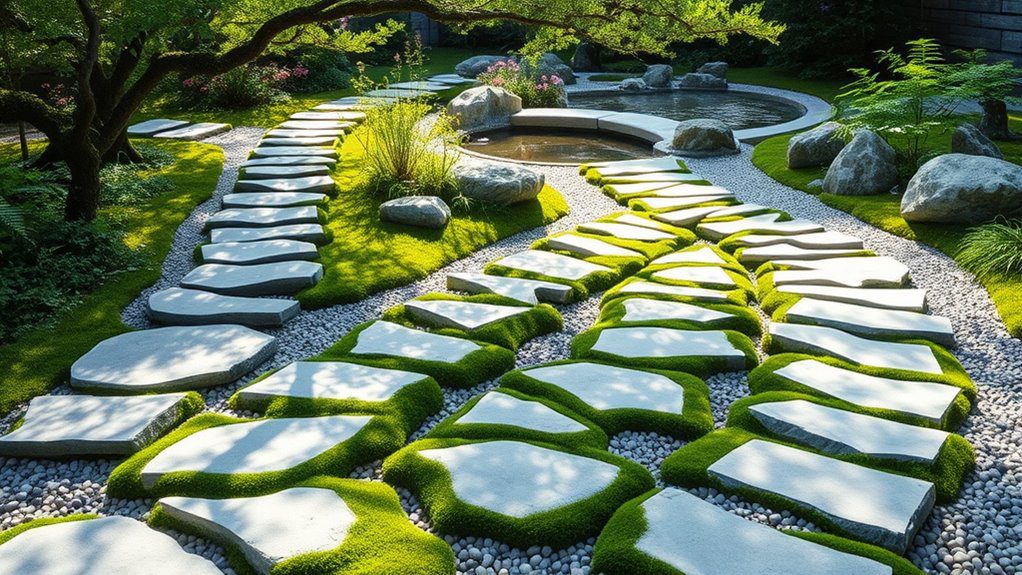
Crafting a pathway with stepping stones is an essential element in achieving the tranquil aesthetic of a Japanese garden. By selecting natural stones in varying sizes and shapes, you can create a meandering path that guides visitors through lush greenery and blooming flora. Strategically spacing the stones allows for an inviting and organic feel, while incorporating gravel or moss between them enhances the serene atmosphere. This pathway not only serves a practical purpose but also evokes a sense of harmony with nature.
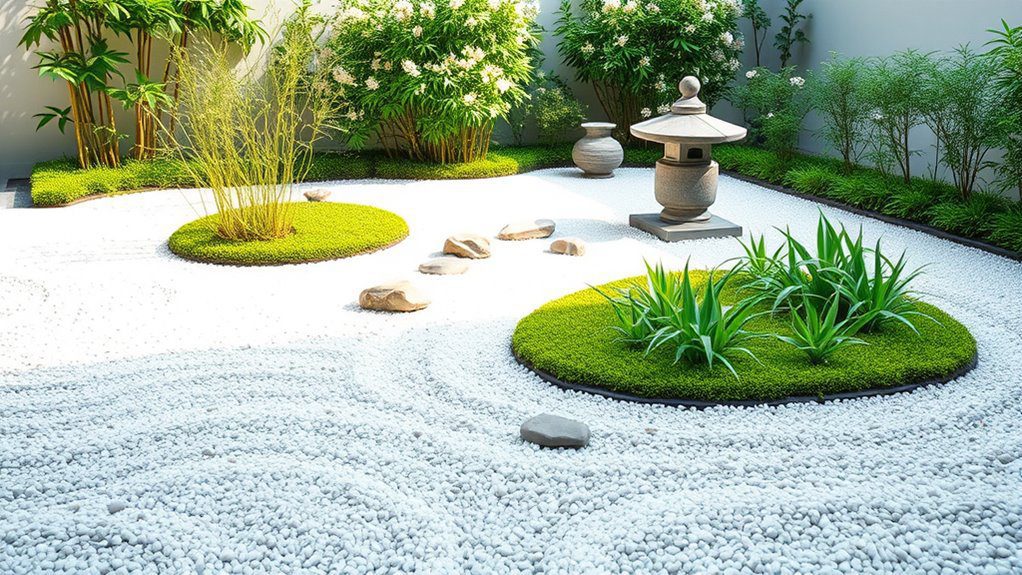
Gravel is an essential element in creating a compact Zen landscape, offering both aesthetic appeal and practical benefits. By incorporating finely crushed gravel or pebbles, you can design a serene environment that mimics the feel of a traditional Japanese garden. Use gravel to create patterns that represent water ripples, or as a base for pathways and rock features. This low-maintenance ground cover provides excellent drainage, contrasting beautifully with lush greenery while promoting a tranquil atmosphere.
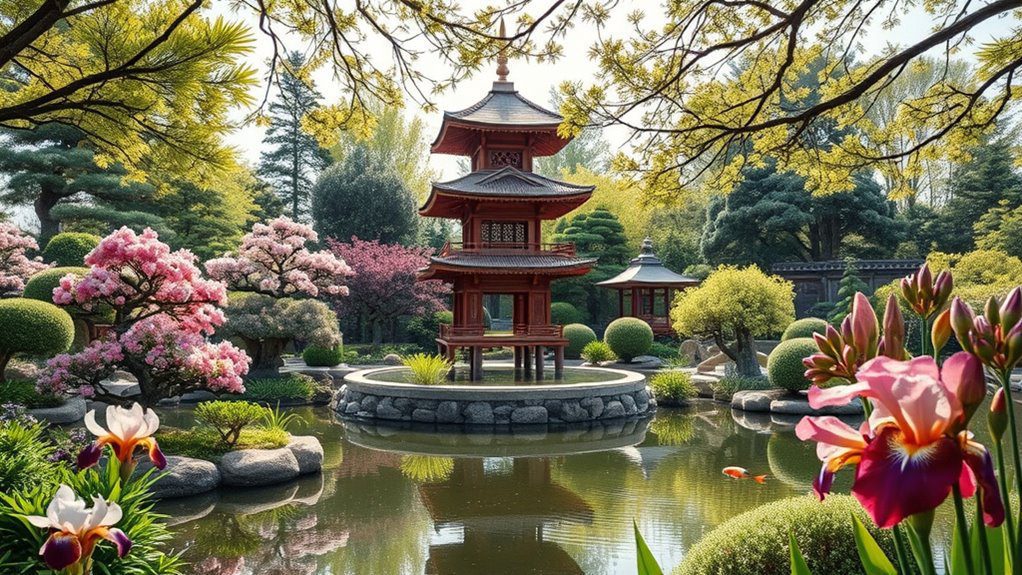
A pagoda can serve as a stunning focal point in a Japanese garden, symbolizing harmony and tranquility. These tiered structures, often made of wood or stone, can be adorned with intricate carvings and traditional designs that reflect Japanese architecture. Position your pagoda amidst lush greenery, flowering plants, or serene water features to enhance its visual appeal. Its height not only draws the eye but also invites contemplation, making it a perfect spot for relaxation and reflection.
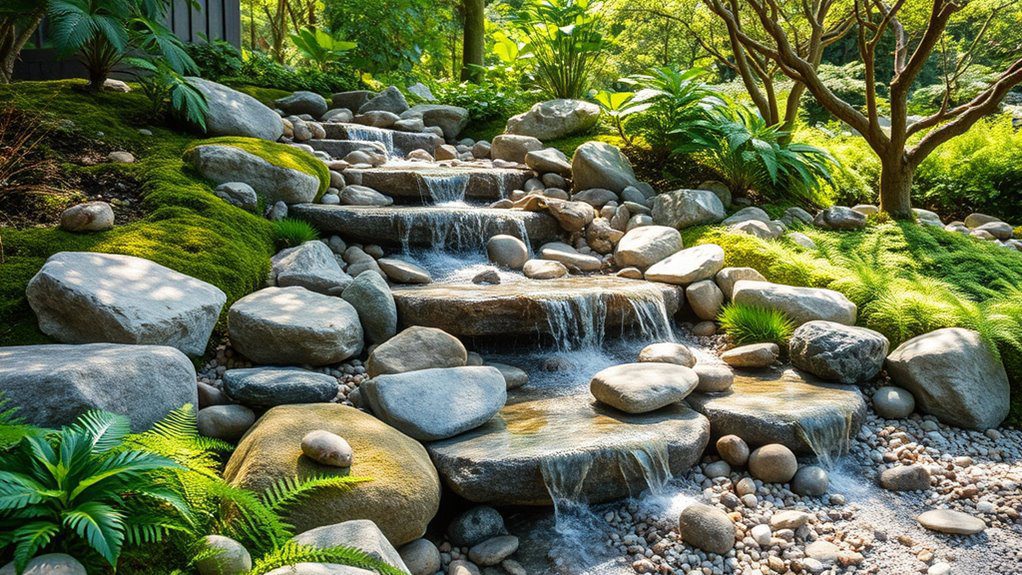
Incorporating a dry waterfall into your Japanese garden can create stunning visual interest and enhance the overall aesthetic appeal. This feature can be formed using carefully arranged stones, pebbles, and gravel, simulating the natural flow of water without actual liquid. The cascading design adds a dynamic element, inviting visitors to appreciate the textures and shapes of the rocks, while soft greenery and moss can further enhance the serene atmosphere. This tranquil focal point embodies the essence of nature in Japanese garden design.
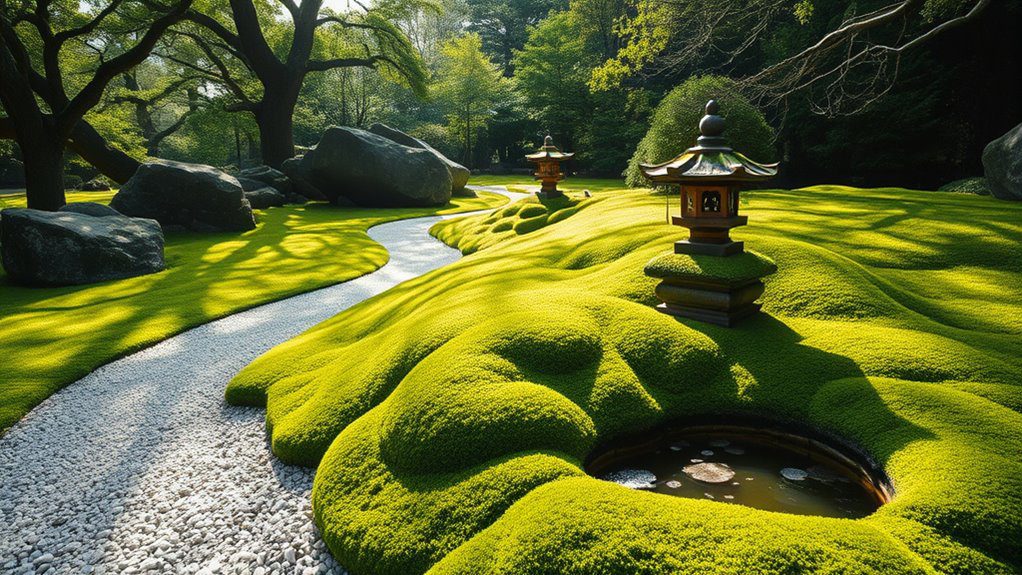
Creating a moss garden can transform your outdoor space into a tranquil Japanese-inspired retreat. Begin by selecting a shady area with moist, well-draining soil, where moss can thrive. Incorporate various moss species for texture and depth, layering them over rocks and between stepping stones. Add elements like stone lanterns, gravel pathways, or a small water feature to enhance the serene atmosphere. Regular maintenance includes gentle watering and avoiding foot traffic to preserve the lush, green carpet of moss.
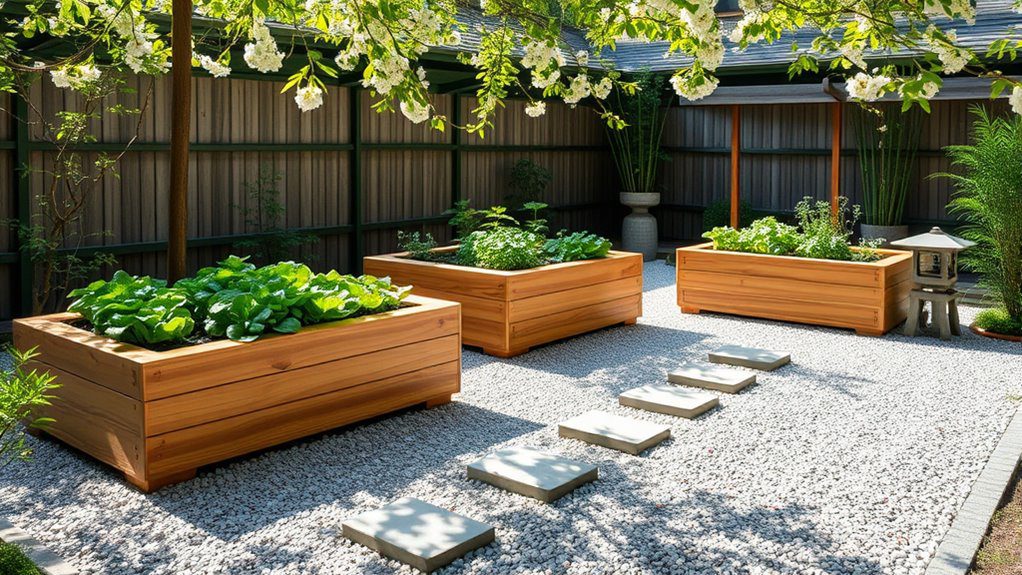
Incorporating raised beds into a Japanese garden can be a harmonious way to cultivate organic vegetables while maintaining aesthetic appeal. Elevated beds create a structured yet natural look, aligning with the Japanese principles of simplicity and harmony with nature. Use natural materials like untreated wood or stone to complement the garden’s design. Surround the beds with gravel or stepping stones, and plant traditional Japanese vegetables like shiso or daikon for an authentic touch, blending functionality with beauty.
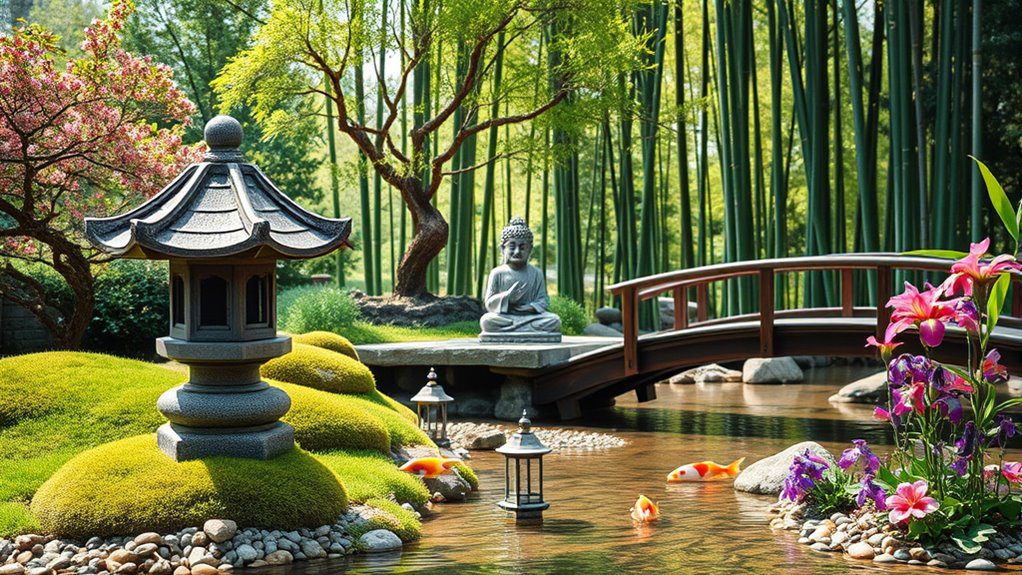
Enhancing your Japanese garden with statues can bring an element of tranquility and cultural significance. Choose from traditional figures like koi fish, Buddha, or stone lanterns, each symbolizing peace and harmony. Position these statues thoughtfully among rocks, water features, and lush greenery to create focal points that invite contemplation. Whether carved from stone, wood, or ceramics, these artistic elements not only accentuate the beauty of your garden but also evoke the serene ambiance typical of traditional Japanese landscapes.
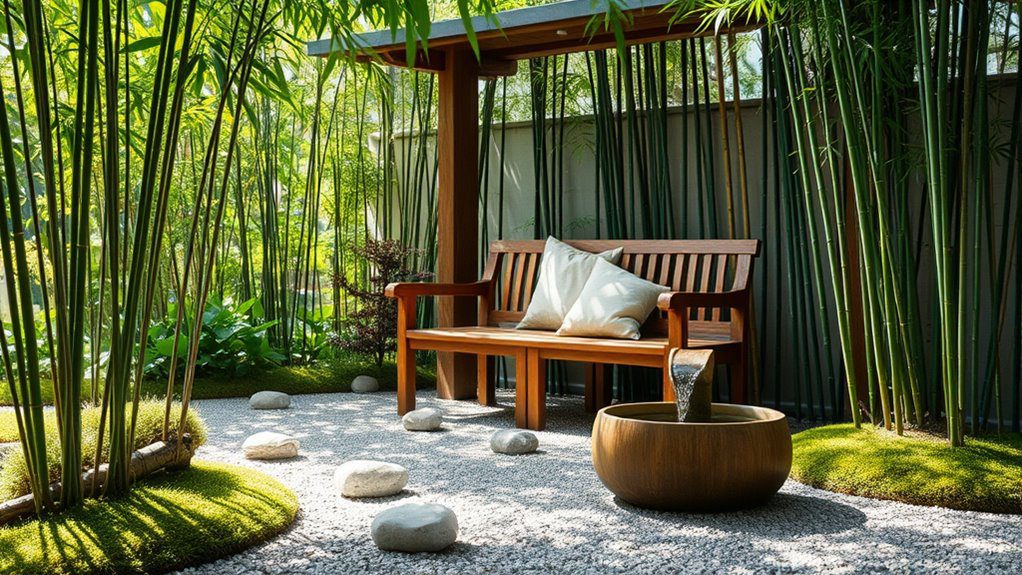
Creating a meditation corner in your Japanese garden can provide a serene escape amidst nature. Consider placing a simple stone bench or a wooden seating area sheltered by bamboo or plants. Surround the space with elements like gravel, moss, and carefully placed rocks to inspire tranquility. Add a small water feature, like a bamboo fountain, to enhance the soothing atmosphere. Incorporating cushions in natural fabrics can guarantee comfort as you embrace moments of mindfulness in this peaceful retreat.
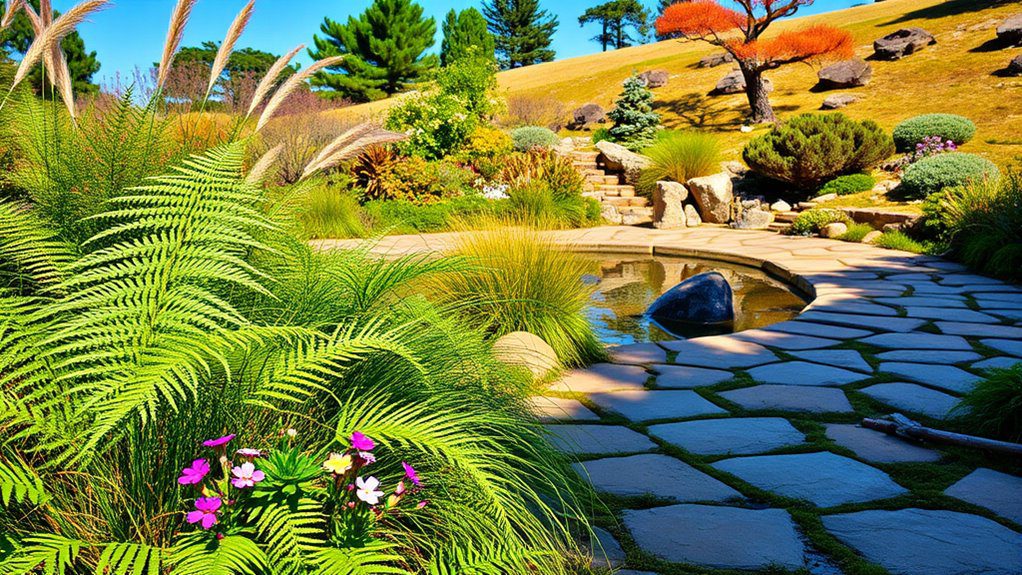
To create an authentic Japanese garden, it’s crucial to incorporate native plants that harmonize with the landscape. Choose local flora that complements the serene aesthetics of the garden while providing a natural feel. Plants like ferns, wildflowers, and grasses can enhance the tranquility and biodiversity of the space. Additionally, using native plants helps support local wildlife and guarantees the garden is sustainable, making it a peaceful retreat that resonates with the surrounding environment.
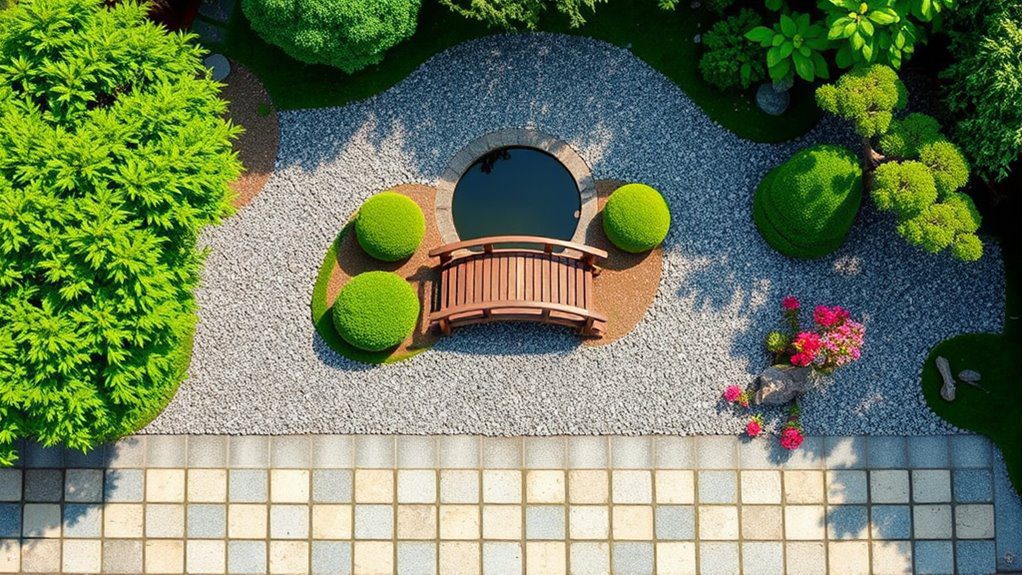
Incorporating geometric shapes in hardscaping is a hallmark of Japanese garden design. Using elements like square stone pavers, circular gravel arrangements, or linear pathways can create a sense of harmony and balance. These shapes guide the eye through the garden, promote mindfulness, and echo the natural forms found in the surrounding landscape. Integrating geometric patterns with traditional materials like stone and wood enhances the aesthetic, making the outdoor space a serene retreat.
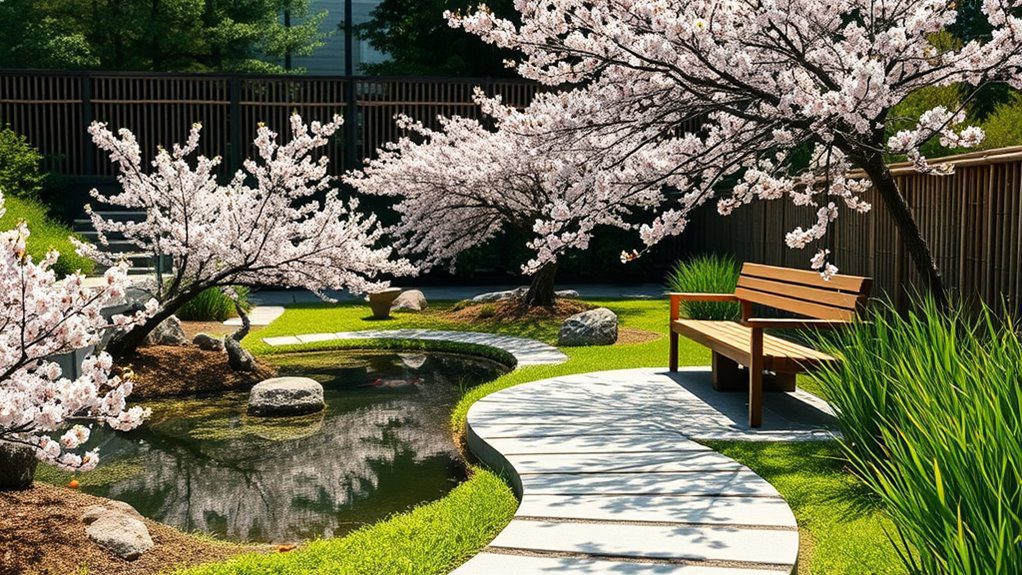
Intertwining modern design elements with traditional Japanese aesthetics creates a harmonious garden that bridges past and present. Consider incorporating minimalist features, such as sleek stone pathways or contemporary sculptures, alongside classic elements like cherry blossom trees, koi ponds, or bamboo fences. This fusion allows for an elegant balance, emphasizing simplicity and tranquility while adding a fresh, innovative touch. Through careful planning and design, your garden can reflect both the serenity of tradition and the boldness of modernity.
As you commence your journey to create a Japanese garden, remember that every element you choose can weave a tapestry of tranquility. By blending nature with mindful design, your outdoor space will transform into a sanctuary, echoing the whispers of serenity. Embrace the art of simplicity, where each stone and plant sings in harmony. Let your garden reflect not just beauty, but also a profound sense of peace, inviting both you and nature to dance in perfect rhythm.
